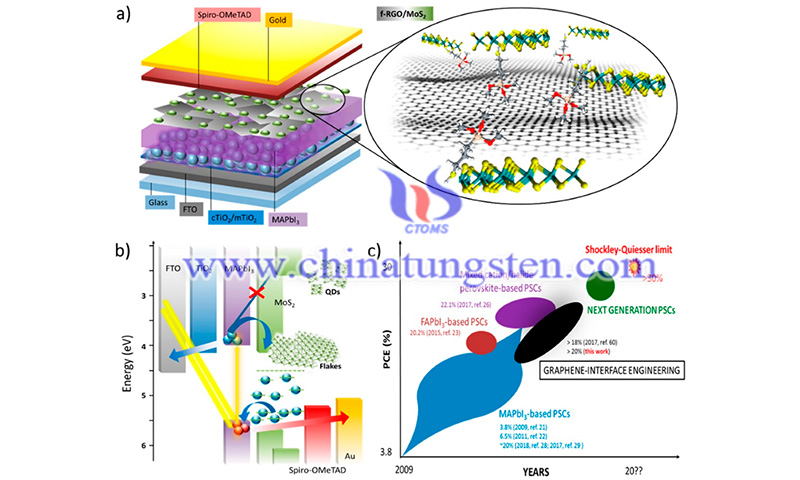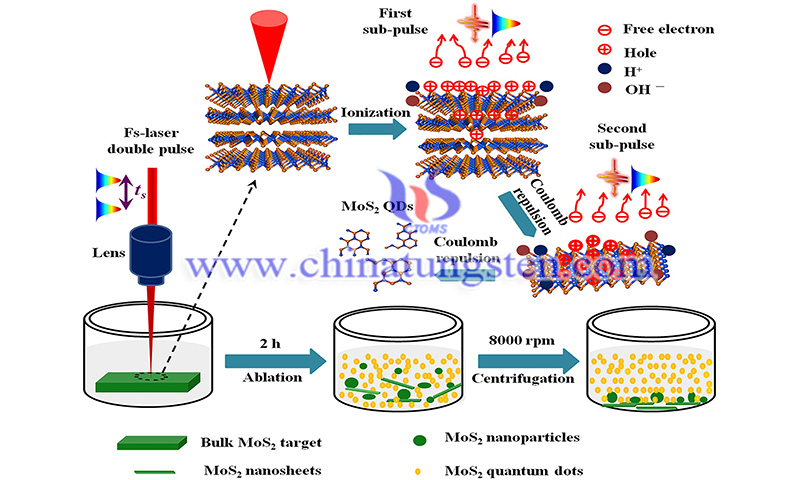Electron Flow Versus Magnetic Flux in Monolayer Molybdenum Disulfide Quantum Dot
- Details
- Category: Tungsten Information
- Published on Saturday, 02 April 2022 19:52
Researchers from Morocco have investigated the Dirac electron scattering problem in quantum dots of monolayer molybdenum disulfide (MoS2) quantum dots subject to magnetic flux. Analytical expressions for the eigenstates, scattering coefficients, scattering efficiency, and radial component of the reflected electron flow were developed by solving the Dirac equation.
The study titled “Electron flow in Monolayer Molybdenum Disulfide Quantum Dot with Magnetic Flux” has been review online. The study was carried out by Abdelhadi Belouad et al at Chouaïb Doukkali University, Morocco.
The discovery of the first single-atom-thick material, graphene, in 2004 accelerated research into two-dimensional (2D) materials at the atomic level. Controlling single atomic layers and recombining them layer by layer in a precise order to build heterogeneous structures opened up unlimited possibilities for new applications.
Recently, monolayer molybdenum disulfide has attracted attention because it matches electron mobility with graphene devices and has a limited energy gap. Monolayer MoS2 possesses a direct gap, an indirect gap semiconductor, and secondly, its electrical properties appear to be very sensitive to external stress, strain, and temperature, which affect the gap and, under certain conditions, can also produce insulator/metal transitions.

Two-dimensional (2D) transition metal dichloride nanomaterials have attracted the interest of many researchers in recent years due to their special properties, such as optical properties, electrochemical and catalytic activities. As a result, various potential applications in sensing, photocatalysis, energy, healthcare, and other related fields have been demonstrated.
After treatment, the size of these two-dimensional nanomaterials will be further reduced, creating quantum dots with unique optical properties that may be used in a range of industries. Molybdenum disulfide quantum dots (MoS2 QDs) have received much attention among these transition metal dichloride quantum dots due to their ease of fabrication and excellent biocompatibility.
In addition, MoS2 QDs exhibit tiny size and controlled fluorescence emission compared with other morphological MoS2 nanostructures such as nanosheets and nanotubes, conferring their promising applications in biological fields such as biosensing, bioimaging, etc.
This study was carried out for the scattering of Dirac electrons in MoS2 quantum dots subjected to a potential V and a magnetic flux φ. Appropriate boundary conditions for the Dirac equation are calculated and it is shown that the scattering coefficients αm and βm can be used to characterize the system, and the radial component of the current density, the squared modulus of the scattering coefficient, and the scattering efficiency are determined.

Dirac electron scattering from spin-up and spin-down states in MoS2 quantum dots as a function of the quantum dot radius R. It is found that the efficient scattering Q becomes zero when R approaches zero so that Q exhibits damped oscillation characteristics when R increases, and the peaks that appear depend on φ and τ. The effect of incident energy E on the scattering phenomenon, it was shown that when E increases, Q decreases rapidly with the appearance of a single resonance peak for both spin states.
In addition, this study found that Q exhibits oscillatory behavior as a function of the gap energy with symmetric behavior in analyzing the squared modulus of the diffusion coefficient as a function of the incident energy to find resonances. This study shows that the scattering coefficient, the scattering efficiency, and the radial component of the reflected electron flow of molybdenum disulfide quantum dots depend on the magnetic flux.
| Molybdenum Supplier: Chinatungsten Online www.molybdenum.com.cn | Tel.: 86 592 5129696; Fax: 86 592 5129797;Email:sales@chinatungsten.com |
| Tungsten News & Prices, 3G Version: http://3g.chinatungsten.com | Molybdenum News & Molybdenum Price: http://news.molybdenum.com.cn |



 sales@chinatungsten.com
sales@chinatungsten.com